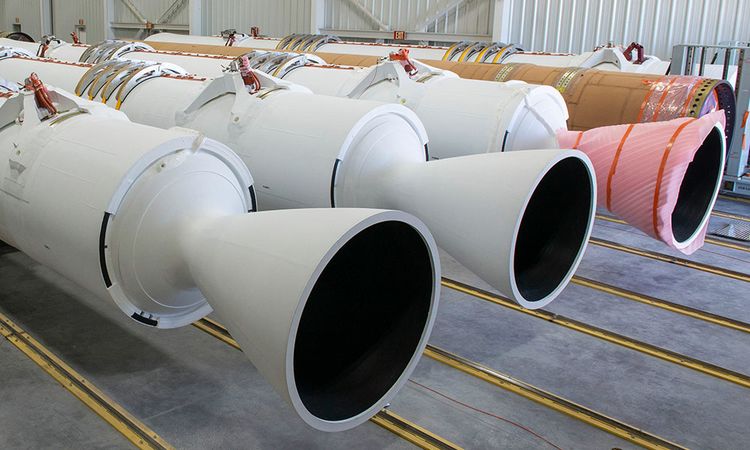
As United Launch Alliance (ULA) counts down to next year’s liftoff of the first Vulcan-Centaur booster, efforts continue to crank up in Florida not only to receive hardware for the new vehicle, but also to flight-test critical components on several forthcoming Atlas V missions. Earlier this month, a new-style payload fairing for Vulcan-Centaur—fabricated with the “Out-of-Autoclave” manufacturing process—was delivered to Cape Canaveral. And now the first members of a fourth-generation Graphite Epoxy Motor (GEM) have been transported from Northrop Grumman Corp.’s facility in Magna, Utah, to the Cape, where they will be utilized on an Atlas V mission to deliver the NROL-101 classified payload to orbit for the National Reconnaissance Office, later this fall.
The Common Core Booster (CCB) and Centaur upper stage for the NROL-101 mission arrived on the Space Coast in early July, transported from ULA’s Decatur, Ala., facility via the RocketShip cargo vessel. The highly secretive NROL-101 payload—about whose purpose not even a trickle of information has emerged—is currently scheduled to fly from historic Space Launch Complex (SLC)-41 in September. Teamed with three solid-fueled strap-on boosters, the Atlas V 531 for the mission has the capability to deliver some 34,330 pounds (15,575 kg) to low-Earth orbit and up to 16,480 pounds (7,475 kg) to geostationary altitude, indicative of the energy needed to lift NROL-101.
The 531 configuration, whose numerical designator owes itself to the rocket having a 17-foot-wide (5-meter) payload fairing, three strap-on boosters and a single-engine Centaur, has previously only flown three times, delivering the first three members of the Advanced Extremely High Frequency (AEHF) military communications satellite network between August 2010 and September 2013. “It’s just a less frequent mass and orbit combination,” ULA CEO Tory Bruno explained in response to a recently tweeted question from AmericaSpace. “For perspective, Atlas and Delta together come in over 41 configurations, with most of those being Atlas variants. So small numbers (even zero) for some configurations is to be expected.”
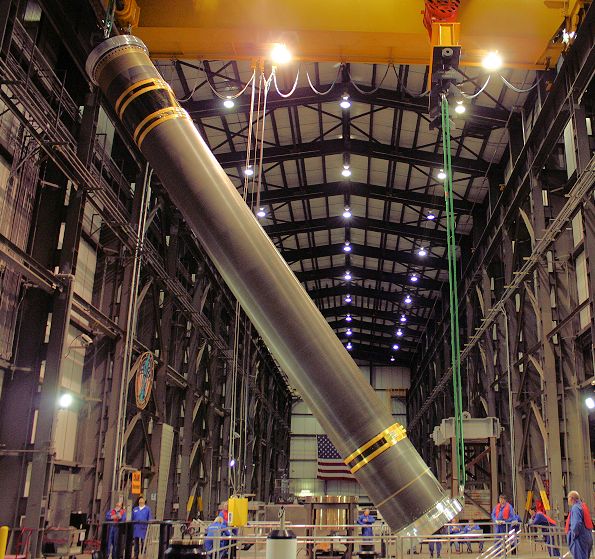
A less frequently used vehicle, perhaps, but on NROL-101 the Atlas V will boast a rather substantial upgrade in the form of the first set of GEM-63 solid-fueled boosters. Derived from the heritage of its predecessor, the GEM-60—which provided most of the liftoff muscle for Delta IV Medium launches—the 63-inch-diameter (1.6-meter) GEM-63 stands 65 feet (20 meters) tall and is the longest single-case solid-fueled rocket motor ever developed by Northrop Grumman. It will replace the GEM-60s used by the now-retired Delta IV Medium fleet and the Aerojet Rocketdyne-built AJ-60A boosters previously employed by the Atlas V. A slightly taller version, the GEM-63XL, will be used by Vulcan-Centaur.
In a tweet on Wednesday, Mr. Bruno made reference to the peculiar ogive shape to the “heads” of the GEM-63s that will launch NROL-101. “Vulcan’s SRBs will have conical nose fairings,” he explained. “The ogive shape is unique to Atlas and done for aerodynamic loading reasons, not necessary on Vulcan.”
The origins of the GEM-63 date back to contracts awarded to Orbital ATK back in September 2015, with a key aim to “significantly lower the price to ULA and to the U.S. government”. In tandem with the barebones booster for Atlas V operations, an “extended length” (GEM-63XL) variant was developed for Vulcan, whose 72-foot (22-meter) height makes it the longest single-case solid-fueled rocket motor ever built.
“Since GEM-63 consists of the longest monolithic case manufactured (not necessarily the heaviest), it does pose some challenges such as transporting to the launch site,” Northrop Grumman’s Kendra Kastelan told AmericaSpace. “The booster size and weight are pushing the capabilities for over-the-road transport. Special transporters have been fabricated to transport the boosters to Cape Canaveral.”
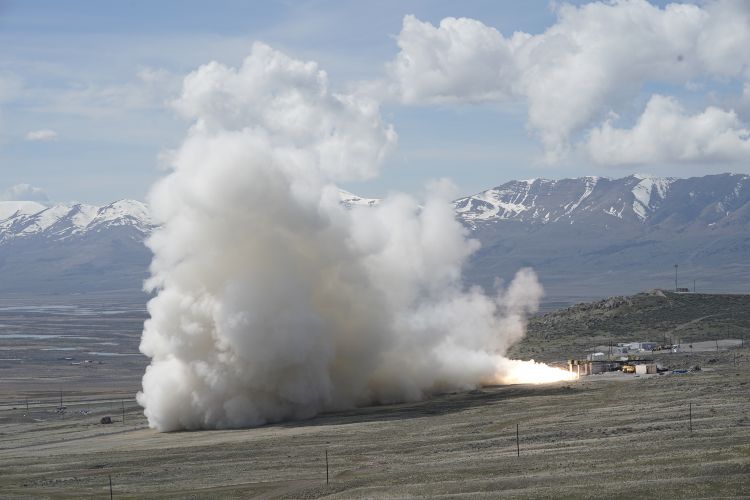
Within just three years, in September 2018 the GEM-63 completed its first 110-second static fire test at Northrop Grumman’s test area in Promontory, Utah, which qualified it for use on the Atlas V, followed by a second test in early 2019 which qualified it for Air Force missions. A third was completed last October to satisfy Air Force requirements, validate ballistic performance across the temperature range and optimize the nozzle.
“Designing a drop-in solution for an existing vehicle is no easy feat,” said former shuttle commander Charlie Precourt, now serving as vice president of propulsion systems at Northrop Grumman Corp. “As ULA’s largest legacy supplier, we have been providing rocket propulsion to ULA and its heritage companies since 1964 and we are pleased to continue our partnership with this new generation motor.”
“The GEM-63 utilized many lessons learned from prior GEM programs,” Ms. Kastelan told AmericaSpace. “Some of their design features and manufacturing processes are even common with GEM-63. It is fair to say that GEM-63 wasn’t starting at the beginning of the learning curve, so NGC was able to get to production sooner than a typical program.”
Over-the-Road Transporter (ORT) systems are reportedly employed to move the GEM-63 components, according to Ms. Kastelan. “These ORTs were specifically designed for improving launch site vehicle mating operations and timeline,” she told us earlier in July. “A GEM-63 inert pathfinder was used to demonstrated the booster mating process with the ORT in May 2019.”
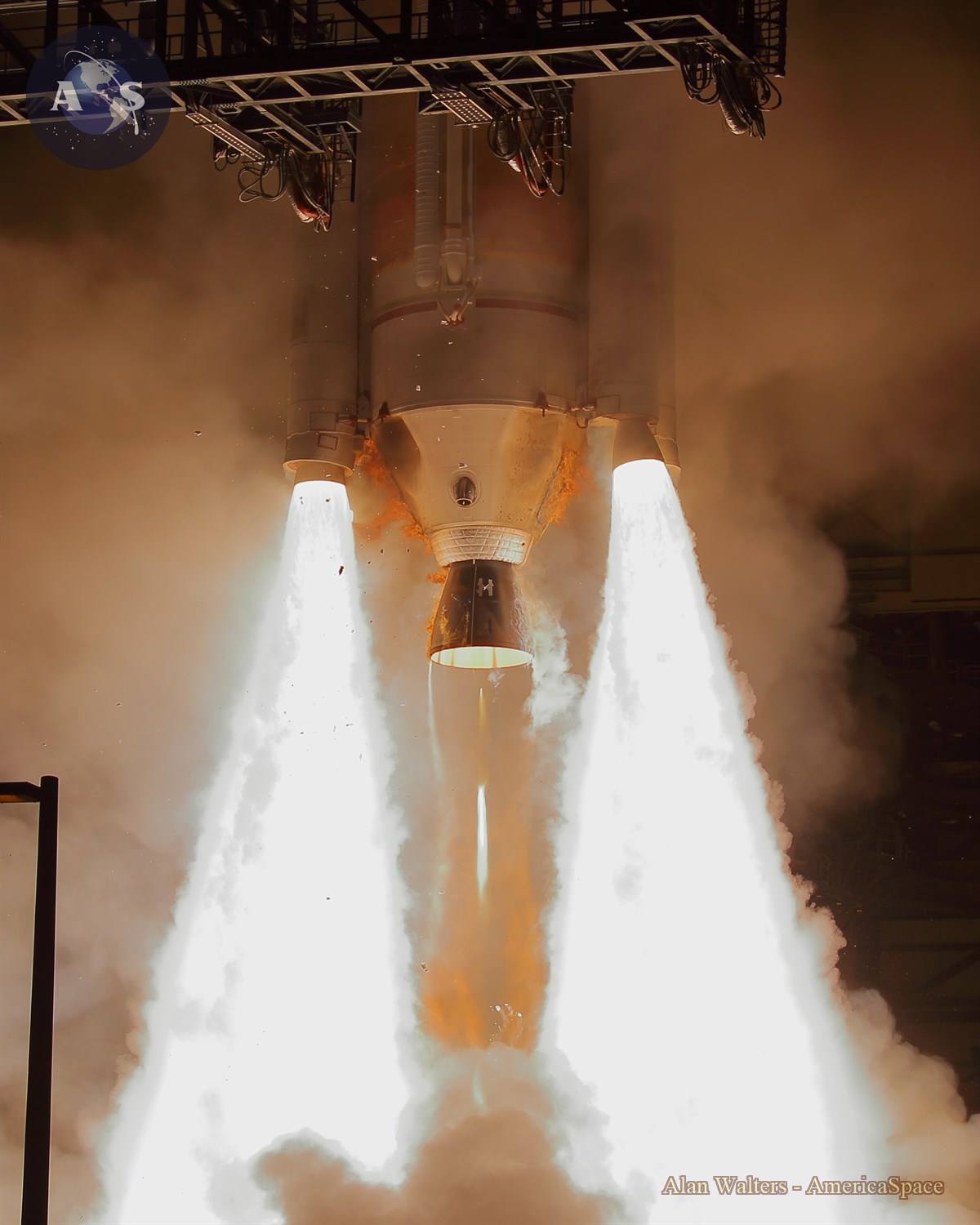
Up to five GEM-63s can support a single Atlas V, with three assigned to power the NROL-101 mission away from the pad in September. Each booster generates 373,000 pounds (169,000 kg), which—when combined with the 860,000 pounds (390,000 kg) of liftoff thrust afforded by the Atlas V’s own RD-180 engine—will produce a total thrust at liftoff of close to 2 million pounds (900,000 kg).
All told, there have now been four generations of GEM boosters. The 40-inch-diameter (101.6 cm) GEM-40 supported 132 Delta II missions between November 1990 and September 2018, whilst the 46-inch-diameter (116.8 cm) GEM-46 was used in conjunction with the Delta II Heavy for six launches. More recently, the GEM-60 has been partnered with the workhorse Delta IV Medium+ for 26 missions, most recently the booster’s swansong flight in August of last year.





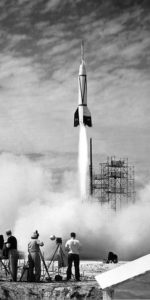
Very classified. Such sophisticates we are.